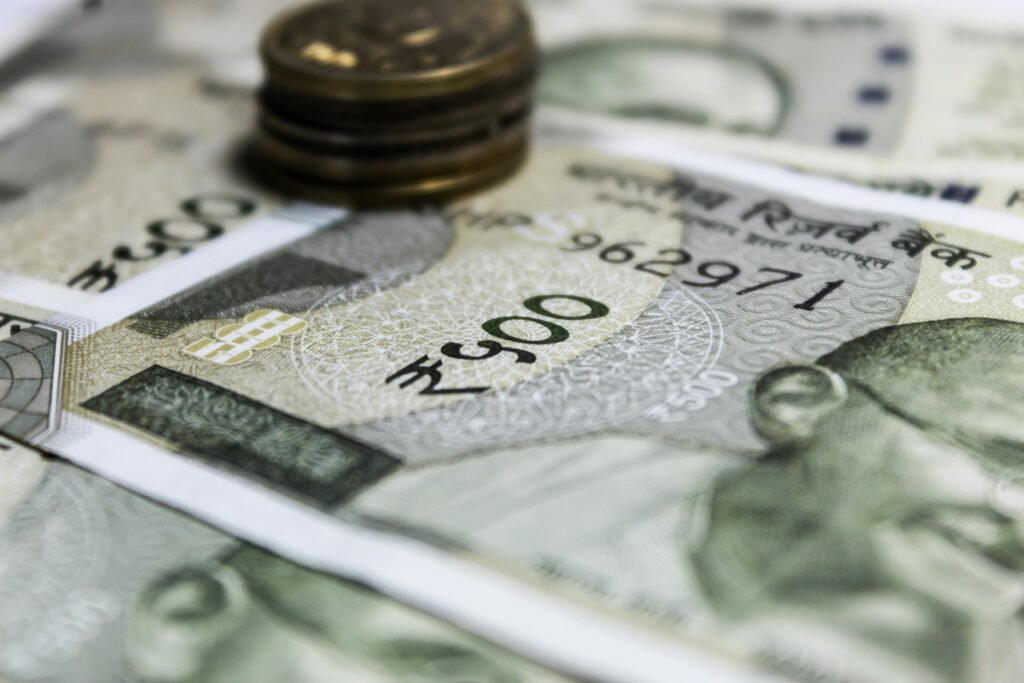In DTAA Explained: Avoid Double Tax – Complete Guide (2025), readers will learn how to legally avoid double taxation, claim DTAA benefits, and optimize their NRI tax compliance.

Have you ever wondered why you pay taxes twice—once in the country where you earn your income and again in India? For many Non-Resident Indians (NRIs), this situation is not hypothetical; rather, it is a frustrating reality. Fortunately, India offers a solution to this problem—the Double Taxation Avoidance Agreement (DTAA).
In DTAA Explained: Avoid Double Tax – Complete Guide, we’ll explore what DTAA is, how it works, which countries have signed this treaty with India, and—most importantly—how you can use DTAA to save tax in 2025.
What is DTAA (Double Taxation Avoidance Agreement)?
The Double Taxation Avoidance Agreement (DTAA) is a tax treaty between two countries that ensures taxpayers are not taxed twice on the same income. For NRIs, this means you can avoid paying taxes both in the country where you earn and in India.
India has signed DTAA agreements with over 90 countries, including the USA, UK, UAE, Canada, and Singapore. These agreements simplify taxation and prevent financial losses due to double taxation.
If you’re also exploring NRE vs NRO accounts to manage your earnings, check out our in-depth guide: What is the Difference Between NRE and NRO Accounts?
Why Does Double Taxation Happen?
Double taxation occurs when two countries claim the right to tax the same income.
For example:
- You work in the USA and earn a salary there.
- You also have investments in India generating interest income.
Without DTAA, you could end up paying taxes on your salary in both countries. Thanks to the DTAA, you can legally reduce this burden.
How DTAA Works in 2025
DTAA works in two main ways:
1. Exemption Method
Under this method, only one country taxes the income. For instance, if the US taxes your salary, India exempts that income.
2. Tax Credit Method
Here, both countries tax the income, but you can claim credit in India for the tax you already paid abroad. This reduces your tax liability significantly.
Example: If you pay 20% tax in the US on interest income, and India taxes it at 30%, you only pay the difference (10%) in India.
Real-Life Example: How DTAA Saves You Tax
Imagine you are an NRI living in the USA earning $10,000 interest income from Indian deposits.
- India’s TDS rate on this interest is 30% (₹2,40,000).
- US tax on the same income is 20% (₹1,60,000).
Without DTAA, you would pay taxes in both countries, thereby losing a large portion of your earnings. However, with DTAA, India allows you to claim credit for the US tax you paid (₹1,60,000). As a result, you only pay the difference (₹80,000) in India, ultimately saving ₹1,60,000.
Benefits of DTAA for NRIs
- Avoids double taxation on the same income.
- Reduces TDS rates on dividends, royalties, and interest.
- Encourages cross-border investments by making taxation predictable.
- Simplifies compliance for NRIs with income in multiple countries.
To make the most of DTAA, you also need to understand how to repatriate money from India without tax hassles. Read our guide: How to Repatriate Money from India: Complete Guide for NRIs (2025).
Countries with Which India Has DTAA
India has DTAA with countries like:
| Country | Method | Key Benefit |
|---|---|---|
| USA | Tax Credit | Avoids double taxation on salary & investments |
| UAE | Exemption | No tax on income earned in UAE |
| UK | Tax Credit | Lower TDS on interest income |
| Singapore | Tax Credit | Favorable rates for business income |
| Canada | Tax Credit | Reduces tax burden on NRI investments |
Sample DTAA TDS Rates for Popular Countries
| Country | TDS on Interest (Approx.) | TDS on Dividends | Special Notes |
|---|---|---|---|
| USA | 15% | 25% | Credit available under treaty |
| UK | 15% | 25% | Lower rates apply if TRC submitted |
| UAE | 0% | 0% | UAE has no personal income tax |
| Singapore | 15% | 10% | Lower rates for business income |
| Canada | 15% | 25% | DTAA credit reduces Indian liability |
For the full list, refer to the Income Tax Department DTAA page.
How to Claim DTAA Benefits?
To claim DTAA benefits in 2025, NRIs must follow these steps:
- Obtain a Tax Residency Certificate (TRC) from the foreign country where you live.
- Submit Form 10F to your Indian bank or payer.
- Provide a Self-Declaration about your tax status.
- Quote your PAN while filing taxes in India.
- File your Income Tax Return (ITR) and claim credit under Section 90/91.
If you haven’t applied for a PAN yet, read our article: PAN Card for NRIs – Complete Guide (2025) to understand the process.
Where to Obtain Required DTAA Forms
- Tax Residency Certificate (TRC): Obtain this from your country of residence’s tax authority (e.g., IRS in the USA).
- Form 10F: Download from the Indian Income Tax website and submit it to your Indian bank or the entity deducting TDS.
- Self-Declaration: A simple letter declaring your NRI status and claiming treaty benefits is usually required by banks.
DTAA on Different Income Types and Common Scenarios for NRIs
- NRE/NRO Account Interest – Reduced TDS as per treaty.
- Dividends – Lower withholding tax rates.
- Capital Gains – May be taxed only in one country.
- Salary – Exempt or credited depending on treaty provisions.
- Salary Earned Abroad – Avoids double taxation when working overseas while still having Indian tax obligations.
- Rental Income from Property in India – DTAA can help reduce the TDS on rent remitted to your foreign account.
- Investment Income (Stocks, Mutual Funds, Fixed Deposits) – NRIs can claim lower TDS on dividends or interest as per treaty rates.
- Freelance or Business Income – When you earn from foreign clients but have to declare income in India, DTAA prevents double tax.
Common Mistakes NRIs Make with DTAA
- Failing to obtain a Tax Residency Certificate (TRC).
- Believing DTAA applies automatically without documentation.
- Not declaring foreign income properly in Indian returns.
- Missing out on reduced TDS rates due to lack of proof.
Recent Updates to DTAA in 2025
In recent years, India has renegotiated treaties with several countries to curb tax evasion. Some treaties, like with Mauritius, have seen changes in capital gains taxation. Always check the latest DTAA provisions for your country of residence.
DTAA vs Section 206AA: Which One Applies?
A common question for NRIs is whether the higher TDS rate under Section 206AA applies if they do not have a PAN. Section 206AA mandates that when a non-resident fails to furnish a PAN, the tax deductor must apply a TDS rate of 20% or the applicable rate, whichever is higher. However, courts have consistently ruled that DTAA provisions override Section 206AA when they are more beneficial to the taxpayer, provided the NRI submits a Tax Residency Certificate (TRC) and Form 10F. This means that even without a PAN, you can claim lower DTAA rates on income like interest, dividends, or royalties, as long as you furnish the necessary documentation. Therefore, DTAA acts as a safeguard for NRIs, ensuring that procedural non-compliance (like missing PAN) does not negate treaty benefits.
FAQs on DTAA (Double Taxation Avoidance Agreement)
1. What is DTAA and why is it important for NRIs?
DTAA is a treaty between two countries to prevent NRIs from being taxed twice on the same income. It helps in reducing the overall tax burden.
2. Which countries have a DTAA with India?
India has signed DTAA with over 90 countries, including the USA, UK, UAE, Singapore, and Canada. You can find the full list on the Income Tax Department’s website.
3. Does DTAA automatically apply, or do I need to apply for it?
No, DTAA benefits do not apply automatically. Instead, you must provide documentation, such as a Tax Residency Certificate (TRC) and Form 10F, so that you can claim them successfully.
4. Is a PAN card required to claim DTAA benefits?
Yes. Indeed, NRIs must have a PAN card because it is mandatory to claim DTAA benefits in India.
5. What is a Tax Residency Certificate (TRC) and how do I get it?
A TRC is proof that you are a tax resident of another country. It is issued by the tax authorities in your country of residence.
6. Can NRIs claim DTAA benefits on NRE and NRO account interest?
Yes. In fact, DTAA often reduces TDS on interest earned from NRO accounts. Moreover, NRE account interest is already tax-free in India for NRIs.
7. Does DTAA apply to capital gains from selling property in India?
It depends on the treaty with your country of residence. Some DTAA agreements exempt capital gains from tax in India, while others do not.
8. What is the difference between DTAA and Section 91 tax relief?
DTAA applies when there is a treaty between India and another country. Section 91 relief is available even without a treaty but offers limited benefits.
9. Can I claim DTAA if I work in the UAE, where there is no income tax?
Yes. India has a DTAA with the UAE, and since UAE does not levy income tax, Indian income may still get favorable treatment under the treaty.
10. Does DTAA reduce TDS on dividends from Indian companies?
Yes. In many cases, DTAA allows lower withholding tax rates on dividends since the applicable rate depends on your country of residence.
11. What happens if I don’t submit TRC and Form 10F to my bank or payer?
You may face higher TDS deductions and lose DTAA benefits.
12. How is DTAA claimed while filing an Income Tax Return (ITR) in India?
You must disclose foreign taxes paid and claim credit under Section 90 or 91 in your ITR.
13. Can DTAA benefits be claimed retroactively for previous years?
Generally, one could claim DTAA benefits in the same assessment year. Retroactive claims may require filing a revised return or seeking a refund.
14. Are DTAA benefits available to OCI cardholders?
Yes, DTAA applies to any person who qualifies as a tax resident of a treaty country, including OCI cardholders.
15. How often should NRIs submit TRC and Form 10F?
NRIs should submit these documents every year; therefore, submitting them annually ensures they continue to avail DTAA benefits without interruption.
16. Are there any recent changes to DTAA rules in 2025?
India has been revising treaties to prevent tax abuse. For example, changes in the India-Mauritius treaty now limit exemptions on capital gains.
17. Does DTAA cover business income or only salary and interest?
DTAA covers multiple income types, including salary, business profits, royalties, capital gains, and dividends, depending on the treaty.
18. What happens if my country does not have DTAA with India?
You cannot claim treaty benefits but can still claim unilateral relief under Section 91.
19. Do I need to declare my foreign income in India if I claim DTAA?
Yes, NRIs must disclose their worldwide income while filing in India, even if they claim DTAA benefits.
20. Is professional help recommended for claiming DTAA benefits?
Yes, because DTAA provisions can be complex and vary by country, consulting a tax expert is advisable.
Conclusion
The Double Taxation Avoidance Agreement (DTAA) serves as a powerful tool that helps NRIs save taxes legally and avoid financial stress. Therefore, in 2025, with increasing cross-border income and investments, understanding DTAA becomes crucial to optimize your tax liability.
Stay updated, keep your documents ready, and consult a tax expert to maximize the benefits.
Disclaimer: This article is for informational purposes only. Regulations can change, and individual situations may vary. Always verify details before making decisions.



